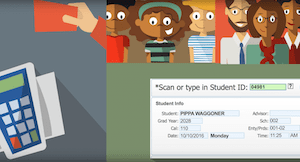
It’s not about rose-tinted glasses, smiley faces, unicorns, or rainbows.
Social-Emotional Learning (SEL) includes building empathy, practicing kindness, managing emotions, and cultivating resilience, among other topics. It’s not new, but it has been renamed for a new age and reframed to prioritize challenges kids face in a digital world.
Truly effective SEL offers timeless strategies for students’ “emotional toolboxes,” teaches kids to tackle tough topics with confidence, and prepares them for the inevitable struggles they’ll face in life. Yes, we hope parents will help their kids along, but, during the 1,000 hours per year kids spend in school away from family, schools are embracing SEL as one component of teaching the whole child and preparing citizens to contribute to society.
At its core, SEL speaks to the tendency of humanity to buck the binary and exist in a gray area. Students learn to think critically about the complexity of human beings, including themselves. Students may start to see historical heroes for the everyday people they were, acknowledging their struggles alongside their triumphs.
It’s sometimes difficult for data-driven educational leaders to embrace the murky, abstract qualities of social and emotional growth. But SEL’s intangible nature doesn’t make it less important than traditional subjects. To get started, here are five strategies for measuring SEL progress—and three to avoid.
1. Response to Intervention
All students will face tough challenges, but some mistake success as something inborn, rather than the product of hard work, determination, and a series of repeated (occasionally spectacular) failures. Resilience takes practice, and so does productive struggle. It’s increasingly difficult to encourage grit when social media provides a constant parade of peers’ triumphs, without even a hint at the work required to achieve them.One way for educators to develop grit and resilience in a child is through Response to Intervention and progress monitoring:
- Drive consistency in your RTI program with clearly defined processes, accountability, and roles for academic struggles and other counseling needs. Who does what and when; how does progress get measured and how often; and what are the expectations for follow-up?
- Track progress toward goals, regularly and visually, with a focus on transparency for parents.
- Recognize and celebrate successes.
- Be clear and forthright with students throughout the process. How did they get to where they wanted to be, what choices led to the positive outcome, and how can they sustain that success?
2. Behavior Trends and Referrals
A student’s behavior is the best indicator of his or her mindset. SEL efforts can help kids manage intense, sometimes overwhelming emotions. Administrators can measure how well students manage emotions by tracking behavior referrals, both positive and negative.- Look for a string of negative interactions in the classroom—not just office referrals, but those managed by teachers. Repeated borderline flare-ups may indicate a deeper issue bothering the student.
- Offer preemptive support systems to help students learn how to tackle problems in a healthy way.
- Encourage students to apply a similarly thoughtful approach to their peers’ struggles—developing empathy and providing a stronger support network.
- Consider testing Positive Behavioral Interventions and Supports (PBIS) in certain schools or grade levels, if you haven't done so already.
3. Extracurricular Activities
Students’ development of social skills extends outside the classroom. Whether they’re playing sports, practicing musical instruments, acting in plays, volunteering, or enjoying some other activity, students are interacting and forming friendships. For some kids this is easy; others require diligent practice.While all schools offer extracurriculars, few are doing any detailed tracking on participation, time commitment, and outcomes. School leaders are encouraged to turn to data as a means of raising awareness of the self-guided exploration shaping the whole child beyond the curriculum.
From a student services standpoint, a recent trend shaping the SEL landscape is the growth of "service learning" opportunities. Along with traditional community service, students are being trusted to serve others right at school, in the case of peer tutoring and mentoring. "Reading buddies," Big Brothers Big Sisters partnerships, and peer tutoring sessions are all popular ways to expand SEL opportunities outside of the classroom.
4. Climate Surveys
The best way to see how SEL is coming along for students and staff at your district? Ask. Create a survey about the culture in your schools and how students’ SEL skills are developing. The way students feel about coming to school can provide a baseline of where to improve.SEL topics your survey may cover include:
- Asking situational questions: “What would you do?”
- Identifying emotions based on facial expressions
- Gauging how students feel about their own abilities
Student surveys have been a popular tool among teachers for some time, but rarely is a big-picture climate survey extended at the school level. As has been a common theme throughout this article, the collection of empirical data in place of anecdotes can do wonders to inform your strategy, your coaching, and your approach.
5. Create Your Own Scale
SEL doesn’t have to be all or nothing: Choose the most important aspect of SEL for your students. Perhaps your district will focus on identifying and managing emotions due to the population of students facing challenges in their personal life. Maybe your measurement of success is different from any listed here. You know your students better than anyone. The trick is to pinpoint something measurable, set a goal, and monitor progress toward the goal—whatever it might be. As the old saying goes, if it doesn't get measured, it's probably not happening (at least not on the level you want it to).Bonus: What Not to Measure
- Feelings: The point of SEL is not to be 100% happy all the time—in fact, its most important purpose is to prepare students for the inevitable opposite. Far from a binary happy/sad or calm/mad, the range of emotion is too vast to measure and looks different for every person.
- Different topics every week: Consistency is key in order for students to understand abstract concepts like SEL. There are so many angles to approach from, but choose the most effective one for your school and stick with it. Re-evaluate after months, not days.
- Individual anecdotes: Like traditional subjects, what works for one student might not work at all for another. The squeaky wheels may get your attention, but you should also be aware if the silent majority has a different opinion.
Integrating SEL into students’ daily routines doesn’t have to be a burden. All it takes is some critical (and creative) thought to unearth the humanity behind existing instruction. Practicing deliberate social and emotional growth as part of the school experience is a great way to make these skills a part of students’ personal lives, preparing the next generation for integration with society beyond graduation.
Does the need for empathy and encouragement extend beyond just your students? Read more about the cascading effects of school culture in The Self-Fulfilling School Culture.
WHAT'S NEXT FOR YOUR EDTECH? The right combo of tools & support retains staff and serves students better. We'd love to help. Visit skyward.com/get-started to learn more.

|
Erin Werra Blogger, Researcher, and Edvocate |
Erin Werra is a content writer and strategist at Skyward’s Advancing K12 blog. Her writing about K12 edtech, data, security, social-emotional learning, and leadership has appeared in THE Journal, District Administration, eSchool News, and more. She enjoys puzzling over details to make K12 edtech info accessible for all. Outside of edtech, she’s waxing poetic about motherhood, personality traits, and self-growth.




